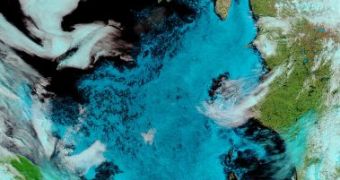A new research carried out by researchers at the University of Bristol in the Hudson Bay region in Canada, suggests that plate tectonics were inactive when our planet was younger and hotter.
There are still many unknown things about the processes that gave Earth's crust its current shape, and the beginning of the plate tectonics has been estimated somewhere between the Hadean (4.6-3.8 billion years ago) or as late as the Neoproterozoic (1,000-542 million years ago).
David Thompson, a PhD student in Bristol’s Department of Earth Sciences, and his colleagues from the University of Calgary and the Geological Survey of Canada studied the thickness and the structure of the Earth's crust by using seismic waves that showed the ongoing processing of a younger planet.
The Hudson Bay is the perfect area to analyze crustal formation during the Precambrian – the period from the formation of Earth some 4.6 billion years ago, until 542 million years ago.
The Bay has kept traces of tectonic events that formed and stabilized the Laurentian continent, or what is today's North America, and has crust that was formed nearly 2 billion years ago.
Scientists analyzed the crust between 3.9 and 2.7 billion years ago and found that its structure was very simple, and there were no traces or plate tectonic processes whatsoever.
However, what they did found, was that the crust formed 1.8 billion years ago had traces of the collision of two continents, just like the one between Asia and India that is still going on today.
After finding this, researchers compared the structure from the Hudson Bay with a continental crust equally aged from another part of the world, and concluded that modern-style plate tectonics may not have been established until as late as 1.8 billion years ago.
The results of this research are published in Earth and Planetary Science Letters and the September issue calls it one of the Nature Geoscience's research highlights.

 14 DAY TRIAL //
14 DAY TRIAL //